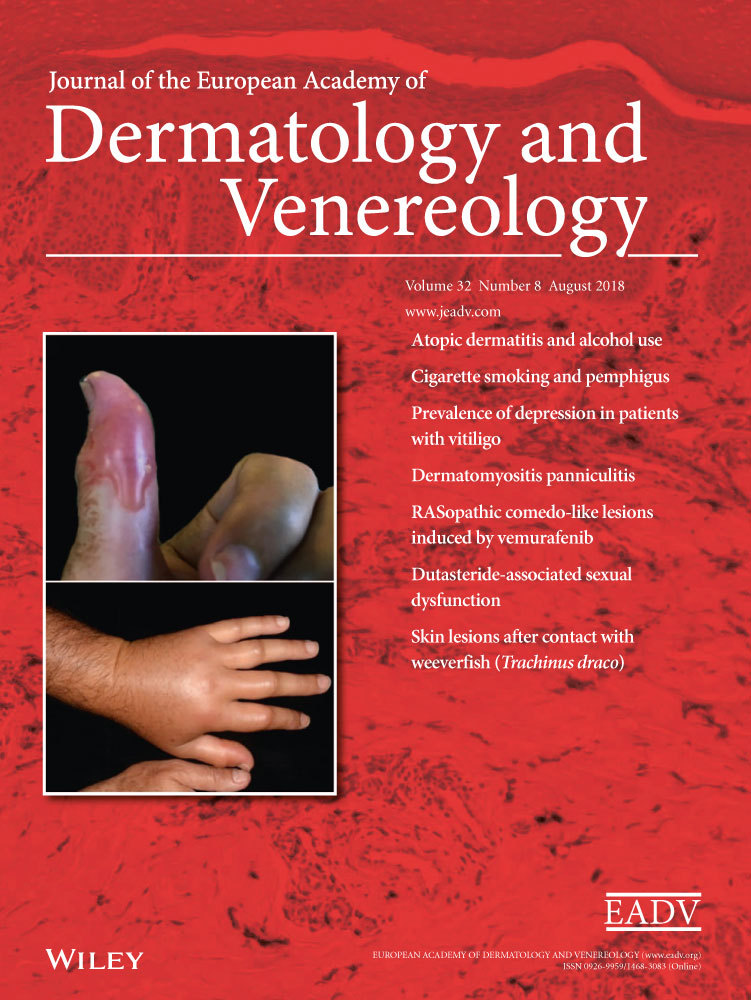Dermoscopic features and patterns of poromas: a multicentre observational case–control study conducted by the International Dermoscopy Society
Conflicts of interest:
None declared.
Funding sources:
This research was funded in part through the NIH/NCI Cancer Center Support Grant P30 CA008748.
Abstract
Background
Poromas are benign cutaneous sweat gland tumours that are challenging to identify. The dermoscopic features of poromas are not well characterized.
Objective
To determine the clinical-dermoscopic features of poromas.
Methods
Cross-sectional, observational study of 113 poromas and 106 matched control lesions from 16 contributors and eight countries. Blinded reviewers evaluated the clinical and dermoscopic features present in each clinical and dermoscopic image.
Results
Poromas were most commonly non-pigmented (85.8%), papules (35.4%) and located on non-acral sites (65.5%). In multivariate analysis, dermoscopic features associated with poroma included white interlacing areas around vessels (OR: 7.9, 95% CI: 1.9–32.5, P = 0.004), yellow structureless areas (OR: 2.5, 95% CI: 1.1–6.0, P = 0.04), milky-red globules (OR: 3.9, 95% CI: 1.4–11.1, P = 0.01) and poorly visualized vessels (OR: 33.3, 95% CI: 1.9–586.5, P = 0.02). The presence of branched vessels with rounded endings was positively associated with poromas but did not reach statistical significance (OR: 2.4, 95% CI: 0.8–6.5, P = 0.10). The presence of any of these five features was associated with a sensitivity and specificity of 62.8% and 82.0%, respectively.
Conclusion
We identified dermoscopic features that are specific to the diagnosis of poroma. Overall, however, the prevalence of these features was low. Significant clinical and dermoscopic variability is a hallmark of these uncommon tumours, which are most prevalent on non-acral sites.




